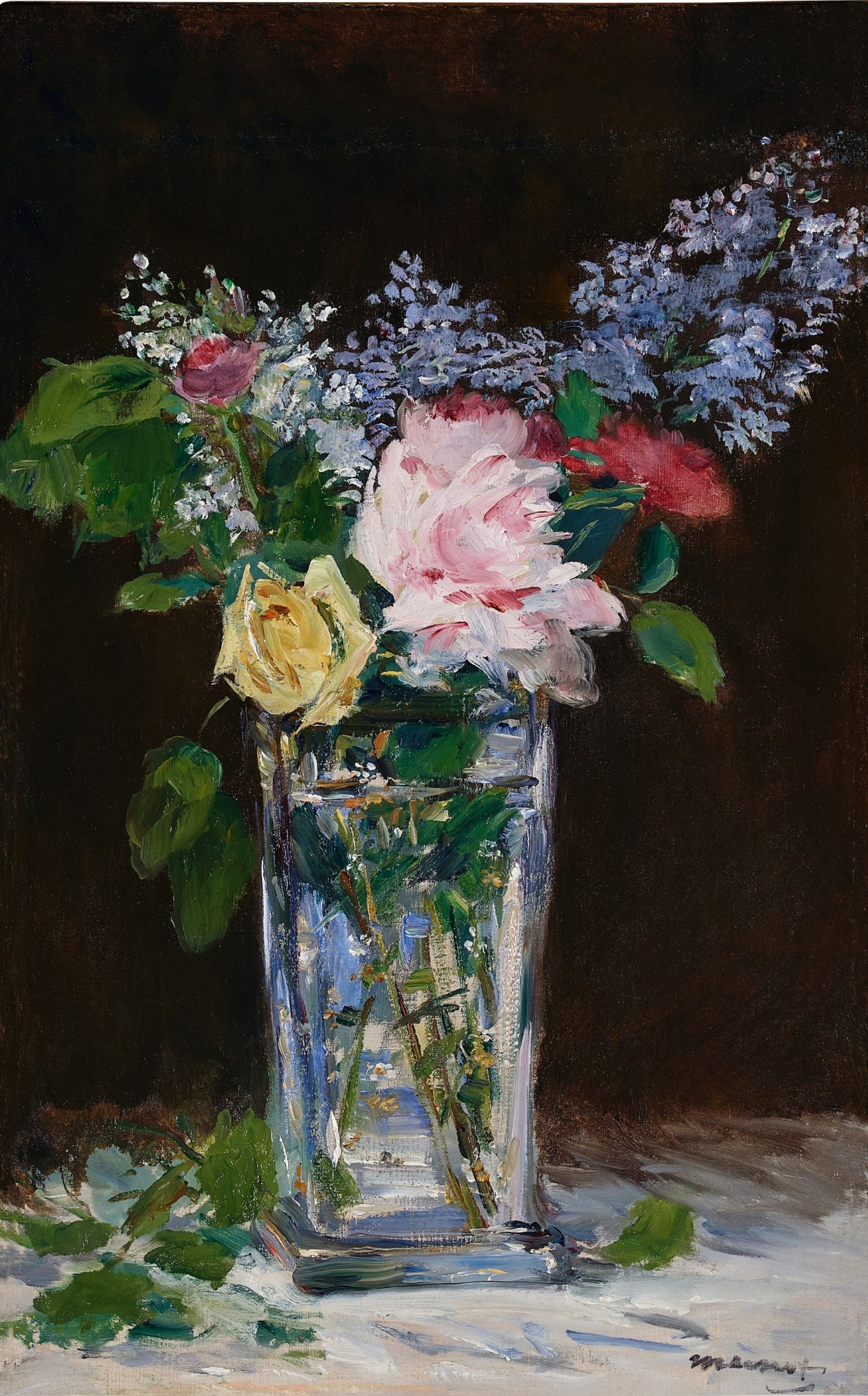
One of the great pleasures of living in New York is being able to stroll over to auction houses when they host viewings in advance of sales. Throughout the year, before tens of thousands of artworks are hammered and shipped off to far-flung mansions, warehouses, and the odd yacht, they are available to us all for a few days, free of charge. Marquee sales of modern and contemporary art arrive next week, and their offerings now hang on the walls of Christie’s, Sotheby’s, and Phillips. If you love art, live in the city, and decide not to stop by, you are being unkind to yourself.
Yes, monumental, splashy artworks are being flogged—a huge Basquiat at Phillips, a tranche of the late Rosa de la Cruz’s once-cutting-edge paintings at Christie’s—but the main event has to be a small picture at Sotheby’s, a luminous still life of flowers that Édouard Manet painted in 1882. It has been shown exactly three times in the past half-century, and it is estimated to sell for as much as $10 million. It has an irrevocable bid, meaning that it is guaranteed to sell. There is no telling when it will appear again. I have stopped by twice so far, and I hope to make a couple more visits. Join me.
The last time a late Manet floral still life appeared at auction was in 2018. That work was Lilas et roses (1882), which Christie’s offered from the collection of Peggy and David Rockefeller. It sold for about $13 million. Photo courtesy Christie’s.
Manet was 51 when he painted the work, Vase of Roses and Lilacs. He was dying, and he knew it. He had finished A Bar at the Folies-Bergère earlier in the year, but now he was having difficulty standing. Friends visited with bouquets of flowers, and when he had the energy, he painted them, working on an easel next to his bed. Sixteen are known to exist (about half are in museums), and each is resplendent, glowing, alive. After Manet’s death, in 1883, the artist Edmond Bazire visited his studio and found two there, including one that was “an explosion of freshness,” he said, “quivering in the crystal vase where the painter’s imagination had put them.”
One reasonable reaction to seeing the painting at Sotheby’s is to laugh. It is miraculous, one of those exceedingly rare pictures where you can see how an artist made it—every brushstroke is visible—while still not quite being able to believe that he did. (Much less that he did so while ill.) The lilacs are quick little hits of that color, some floating in space, while single blue-white strokes conjure, all at once, the glass vase, the water inside it, and the light gracing its side.
Édouard Manet’s Bouquet de Pivoines (1882), which sold at Sotheby’s in London in 2010 for about $11.4 million. Photo courtesy Sotheby’s.
As in many of the paintings in this final series from Manet, darkness fills the background, and shadows are encroaching on the flowers. But this example has something that the other 15 do not: green leaves that have fallen onto the marble table below. “This is not a sweet and saccharine still life,” Allegra Bettini, the head of Sotheby’s modern evening sale, told me by phone. “He was displaying what he saw in front of him.” Time is passing. These flowers will not last.
Each Manet bouquet “is the trace of the departed visitor,” the painter and critic Andrew Forge writes in The Last Flowers of Manet (1986), a compact volume that collects these still lifes. “The painting is like an answering visit.” Confined to bed, Manet was doing what he could—the thing he knew how to do best. These paintings are about the desire to be together, and the recompense that art can offer when that is not possible.